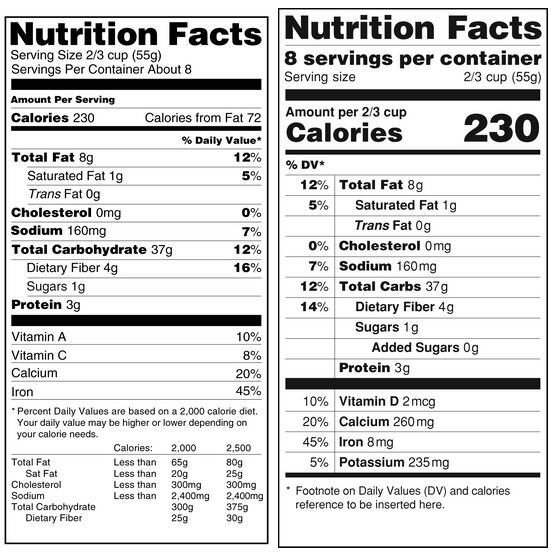The company says it will not reformulate old favorites such as M&M’s to reduce sugar, but has set targets for any new product introductions to be below 250 calories, where possible.
The firm is supporting the World Health Organization’s (WHO’s) recommendation that added sugar (or more precisely ‘free sugars’ - those added to foods by the manufacturer, plus those naturally present in honey, syrups, and fruit juices) account for less than 10% of total calorie intake per day.
In contrast, the National Confectioners Association (NCA) is calling for more scientific substantiation on the WHO’s percentage values and urges high-quality evidence before the U.S. introduces changes on added sugars for the Nutrition Facts Panel.
Mars: We support limiting sugar overconsumption
Anthony Guerrieri, director of external affairs at Mars Chocolate North America, told ConfectioneryNews: "We are not trying to hide behind any science or research. We know what we are and we want to make sure we give you the information to make that decision."
"We want to be very open about how we put out our products. We think they are treats - we do not think they are everyday snacks or meal replacements. We support the idea that limiting overconsumption of sugar makes sense.”
Mars submitted public comment on the Scientific Report of the 2015 Dietary Guidelines Advisory Committee (DGAC) on May 7 2015. It said it supported DGAC’s recommendation that consumers reduce their added sugars intake to no more than 10% of daily energy intake.
Mars also said it would support any revisions to added sugar labeling in the U.S. under the Nutrition Facts Panel. In public comments it supported proposals to list added sugars per serving size on the Nutrition Facts Panel, “provided that those approaches ensure that consumers will correctly interpret the relationship between added and total sugars in the context of their daily caloric needs”.

Self-imposed calorie guidance for new products

Mars has established a nutritional profile for new products that aims to ensure single-serve innovations are below 200 calories. Mondelēz International has a similar goal of increasing individually wrapped options of 200 calories or less by 25% by 2020, but both companies have no targets specifically to cap sugar on new products or reformulate existing brands to cut sugar.
“What we are focused on now is keeping consumers' favorites as they are,” said Mars’ Guerrieri, adding that Mars would instead focus on increasing choice.
One recent example, due to hit stores throughout the U.S. from August this year, is Mars’ snack bar goodnessknows, which contains 12 g of sugar and comes in four portion-controlled pieces that each have less than 40 calories. The firm also recently introduced M&Ms Pretzel and M&M’s Crsipy, which each contain 150 and 180 calories per serving respectively.
We asked what would happen if consumers didn’t take to the lower calorie, lower sugar introductions.
"For us, it's all about choice so if they don’t want to respond to that product we've got other products at the other end of the spectrum that are closer to 250 kcal. It's about how we can make our portfolio as diverse as possible so we can attract the widest range of consumers,” said Guerrieri.
NCA: Sugar is the biggest challenge facing industry

Mars’ stance on sugar diverges from the U.S. National Confectioners Association’s position.
The NCA submitted public comment to U.S. dietary guidelines proposals on May 8 2015 and warned that overemphasis and demonization of single nutrients like added sugar could lead to consumer confusion and damaging consequences.
“Sugars are a defining characteristic of confectionery products. Removing sugar from candy may not result in a commensurate reduction in caloric contribution,” it warned.
John Downs, president of the NCA, told this site at the recent Sweets & Snacks Expo in Chicago sugar’s connection to obesity was the biggest challenge facing the industry.
"We've got a really well-developed, smartly calibrated communications and public affairs effort to address that in a really pro-active way,” he said.
Downs said: "Consumers know sugar is in our products, they understand sugar is an essential part of the product to enjoy confectionery products."
He added that the average U.S. citizen ate confections two to three times a week and said confections accounted for 2% of calories in the American diet and for 6% of added sugars.
WHO’s 5% conditional recommendation
WHO reiterated in March this year that free sugars should account for a maximum of 10% of a person’s caloric intake, but formalized a conditional recommendation that halving a person’s recommended free sugar intake to a maximum of 5% of total calorie intake per day “would have additional benefits”, due to new research on obesity and dental carries.
The WHO’s 5% guidance on ‘free sugars’ equates to around 25 g for the average weighted person – in excess of levels in many single serve (50 g) chocolate bars. Mars’ 52.7 g Snickers bar for example contains 27 g of sugar.
Mars and the NCA both question the 5% conditional recommendation. "We thought we needed a more scientific, rigorous review around the percentages,” said the NCA president John Downs.
Mars’ Guerrieri added: "For us the science that we've seen supports 10% and that's what we support at this point. As things evolve, as there's more science, obviously we'll look at it."
